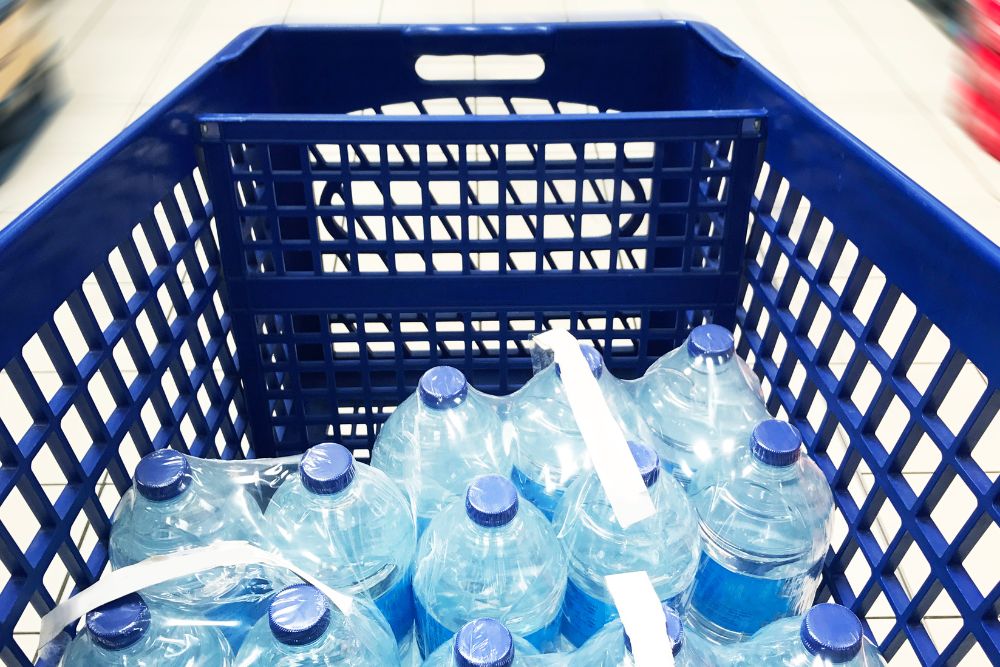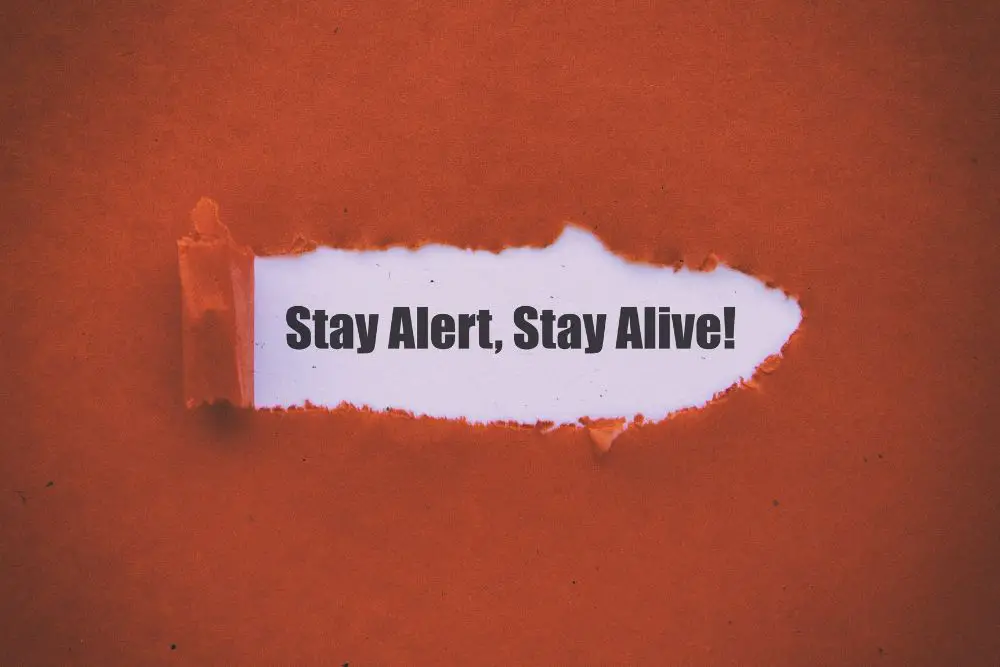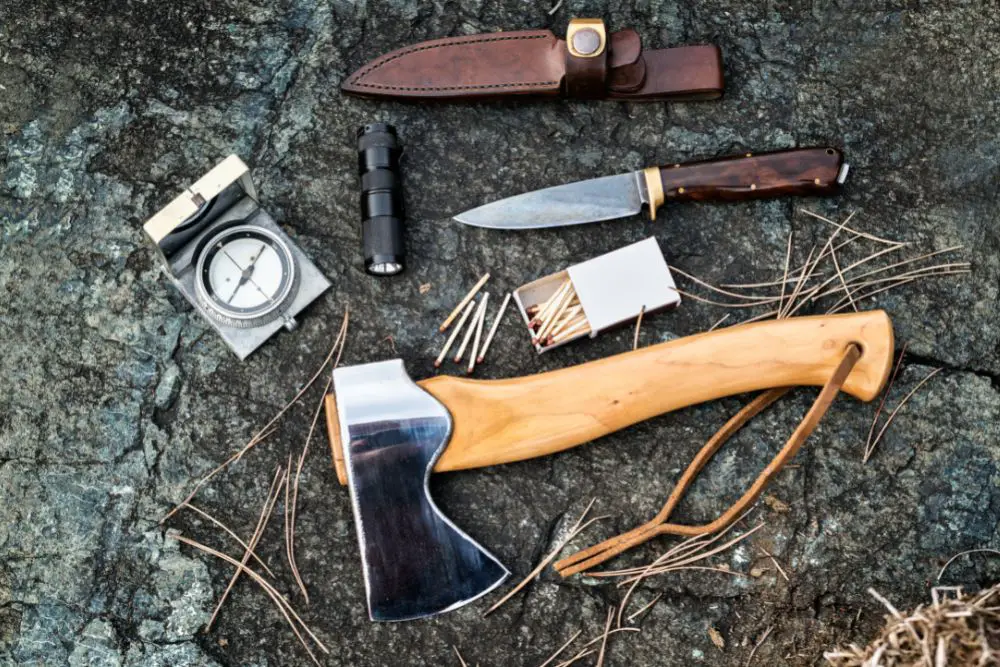We will focus our attention first on what differentiates the three emergency scenarios one could prepare for: short-term, medium-term, and long-term. Their triggers, outcomes, and recommended supplies for survival will all be discussed.
Short-term emergency situations (those lasting 1 day to 1 week) are quite common around the world. Most families will have to deal with one or two small emergencies a year, depending on their geographic location. Of the three emergency scenarios one can prepare for, short-term situations happen the most frequently, but with just a small amount of preparation, one can easily “weather the storms” (pun intended).
In the Pacific Northwest, for example, we get hit by major storms a few times a year, and they can knock out power and wash out roads. The region also sees a few snow and ice storms that wreak havoc on the cities (and citizens) that are unprepared for them.
Every region in the world witnesses short-term emergencies, most often caused by nature. Which of these do you see in your community?
- Tornadoes
- Snow storms
- Floods
- Hurricanes
- Earthquakes
- Wild-fire
- Volcanoes
- Unexpected weather
- … etc.
The effects of these situations are varied, but they can:
- Knock out electricity
- Limit communications (telephone, cable TV, cell phones, internet)
- Limit access beyond your home
- Reduce the gasoline and grocery supplies (due to stocking up before the disaster hits)
How comfortable are you without electricity? With a limited food supply?
Thankfully, these situations happen often enough that most citizens in the region know how to prepare for them, though many still get caught off guard and end up having to scramble for supplies or make do without them. Stay ahead of the pack!
What can you do to prepare for short-term disasters?
A short-term disaster is cheap and easy to prepare for. Get prepared now! A little bit of preparation now goes a long way towards making you comfortable, calm, and prepared when the disaster hits.
A good resource for preparation comes from the US government at ready.gov. The website has a lot of great resources, including an emergency preparation kit checklist, how-to make a readiness plan, and where to go for more information. Their brochures can be easily downloaded and printed. Do it now! If your electricity is out, your printer won’t work!
There are many ways to prepare, but they can be focused into five major categories:
supplies + tools + techniques + fitness + awareness = preparation
While all five categories can be helpful in any emergency scenario, giving higher focus to some initially (supplies and alertness) will help you prepare for a short-term emergency quickly. After you’ve built a supply kit, you will need to spend time and money on the other categories (tools, techniques, and fitness) to prepare yourself for medium (and long) term scenarios.
Your best bets for Short Term Disasters:
- Build an emergency supplies kit
- Be alert! Know where and how to gather information

Step 1: Gather Supplies
Build a supply kit now!
Supplies that will help you in a short-term emergency situation are fairly basic, but the key is having them on hand (in a usable condition) so you don’t have to rush to the local supermarket when a disaster is looming. The panic of ordinary citizens in an emergency can lead to rude and dangerous behavior, and it is best to stay away from places where everyone else is headed in a frenzy. Grocery stores will be out of stock instantly, and you will spend more time in traffic jams and around panicked (and unprepared) citizens. Build your supplies now so you don’t need to rush to the store when the disaster hits.
What should you include in your kit?
A 7-day preparation kit won’t cost you much and is easy to assemble:
- Eating/drinking:
- 1 gallon of water per person/day (bottled water works great)
- A 7-day supply of food per person (canned, mountain house dried food, etc.)
- Shelter
- Sleeping bag
- Warm blankets
- Electronics:
- A battery-powered radio
- Battery-powered GMRS/FRS walkie-talkies
- Flashlights with spare batteries
- Cell phone with extra battery
- Charged batteries to power all electronics
- Sanitation/health
- Moist towelettes
- Toilet paper
- First-aid kit
- Filtration face masks
- Medicines
- Personal needs such as:
- prescriptions
- feminine products
- eyeglasses
- hearing aids
- pet food
- baby formula and diapers
- Information
- Personal information (photocopies of identification, passports, credit cards)
- First-aid manual
- Survival books
- Maps of the surrounding area
- Tools/misc
- Matches or lighters
- Candles
- Whistle
- Multi-tool (Leatherman)
- Wrenches, pliers, screwdrivers
- Can opener for food
- Hatchet
- Fire extinguisher
- Duct tape
- Plastic tarps
- Garbage bags
- Cash ($100 – $1000 in small bills)
Where should you assemble this?
Gather the above items and put them somewhere in your house that isn’t very damp. A bag or storage bin is recommended. Put the supplies aside and don’t touch them. Don’t grab the duct tape from your survival kit just because you can’t find the other roll. You’ll quickly deplete your supply!
Besides having basic supplies, the second major component of being prepared for a short-term emergency is staying alert: having a plan, knowing where and how to gather information, and being able to communicate reliably.

Staying Alert
Being aware of your environment (and the changes happening to it) can give you a big head start in getting ready for something coming your way. Not all emergency scenarios have a period of warning before they hit, but many natural disasters are foretold hours or days in advance. Pay attention to your local news and your environment for early warning signs:
- News of impending unusual or major rain, snow, wind, or ice storms
- Early warnings of hurricanes, tornadoes, or fires in the area
- City emergency sirens
- Natural warnings (ground rumbling, loud noises, dark skies, etc.)
These signs may give you a few extra minutes or hours to meet up with your family and make sure all of your ducks are in a row. Make sure you have a basic emergency plan now, and then know how to gather information and communicate when a disaster hits.
Having a Basic Plan
Start out by coming up with a basic plan for what you and your family will do in case of an emergency. Having a predefined plan serves several purposes:
- A plan prepares you and gets you thinking through what you should do when a disaster strikes.
- Having a plan already helps calm you down when a disaster happens.
- Everyone involved (you, family, friends) can follow the same plan, so everyone’s on the same page about what needs to happen.
A basic disaster preparation plan has a few key components. The plan does not (and should not) be tailored for a specific scenario at this point. You and your family should determine:
- How will you try to contact each other?
- Where will you meet if you are not together?
- Who else you can turn to if you cannot contact or find each other
- What needs to be done when the emergency hits (find your supplies, get out the flashlights, etc.)
The US government’s ready.gov website has a great “Make a Plan” section. Talk with your family and come up with a basic plan everyone understands and can stick to. Keep it simple. Type everything up, and print out a copy that you can have handy. Make sure everyone knows each other’s cell phone numbers by heart.
Additional plans could be developed for specific scenarios, such as what you would do if a hurricane was heading your way. Would you try to pack up the essentials and stay with family in another state? Or would you board the house up and try to see it through? Obviously, any disaster can disrupt even the best-laid plans, but knowing how to extend your basic plan for specific scenarios can help.

Gathering information and communicating
Once a disaster strikes, it is incredibly useful to maintain the flow of information. You will need to receive information from your local and state governments, as well as those around you. You will also want to communicate both within your group and with the outside world.
Receiving up-to-date information about what’s going on can help you plan what to do, where to go, and how long to expect your situation to last. The most reliable forms of receiving information in a disaster are AM/FM radio and NOAA Weather Radio. TV, the internet, and cell phones are also potential sources of information, but the infrastructure they require to operate is brittle and often disrupted or overwhelmed in major scenarios.
The AM/FM and NOAA radio stations can reach hundreds of miles, so the broadcasting stations can be outside of the affected zone. They are your most reliable form of receiving information in an emergency. Amazon has many inexpensive stand-alone NOAA radios, as well as FRS/GMRS radios that can receive NOAA alerts. Having a simple AM/FM radio — especially one that is powered by a battery, or can be hand-cranked — can go a long way in receiving info about what’s going on.
One of the most distressing parts of any emergency is the feeling of not knowing. Listen closely to AM/FM radio and NOAA information sources. These broadcasts can:
- Give you up-to-date information about the emergency (scope and length).
- Help you determine if you should stay in the area or try to leave.
- It informs you of how to get additional help if you need it.
Communication with the outside world is also essential. Staying in contact with others can help guide, calm, and inform you. Today’s most popular long-range communication mediums are landlines, cell phones, and the internet. Unfortunately, all of these technologies are susceptible to infrastructure failure and can be down for days.
Don’t expect to be able to contact others outside of your immediate vicinity, especially if the power is knocked out or the communications infrastructure is damaged. The United States’ cell phone infrastructure is also easily overwhelmed in emergencies, and calls may not get through.
Depending on where you are, your neighbors, co-workers, and friends may be the only ones you are able to communicate with. Try to stay calm and, if you are able, help those around you. An organized group of people can be a powerful asset in an emergency.
If you need to communicate amongst your immediate group over short distances, FRS/GMRS radios are a popular and simple technology that can reach a mile or two. Despite their packaging claims, FRS/GMRS radios will not be able to reach 10-35 miles, especially in an urban environment.

